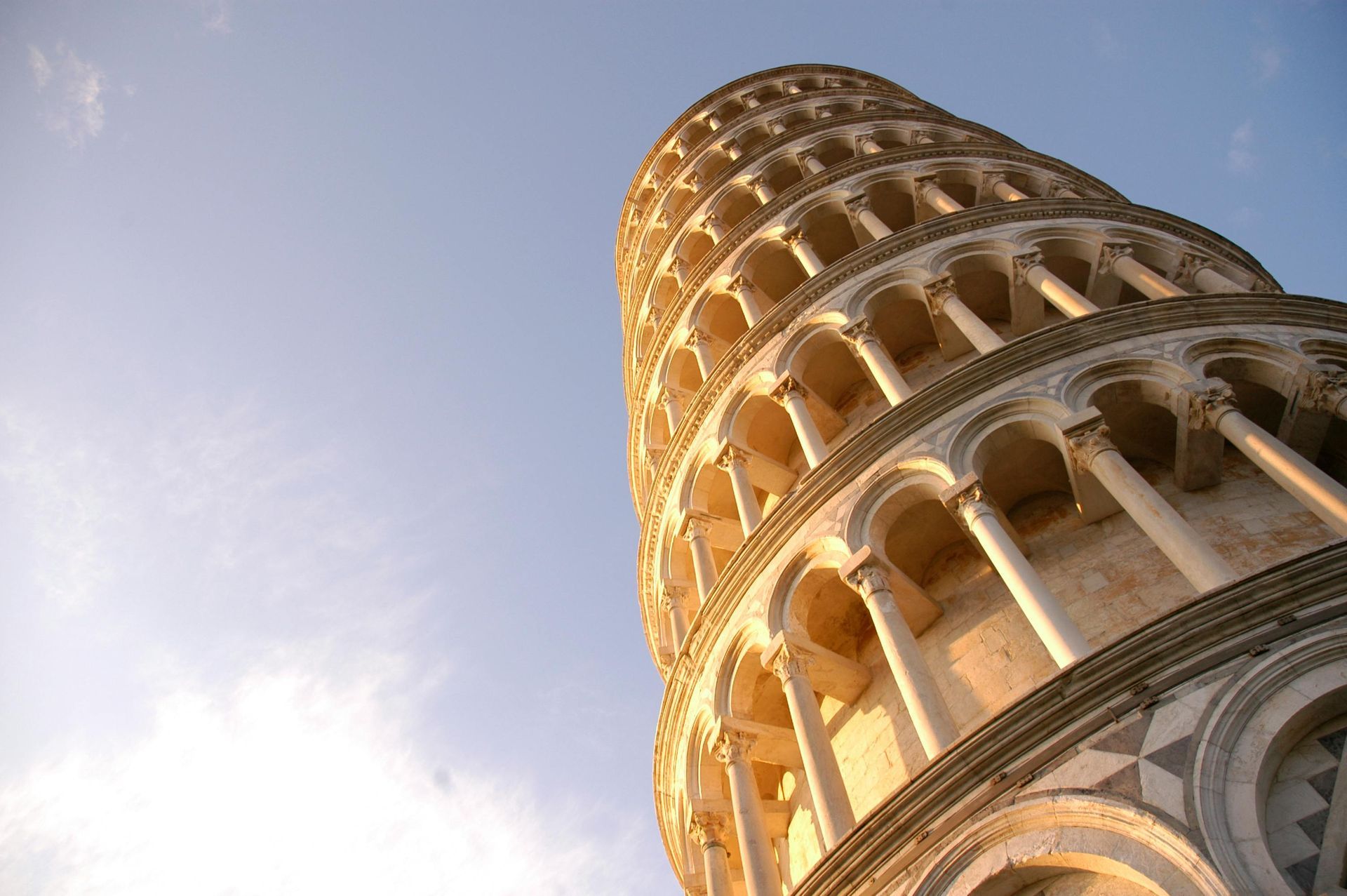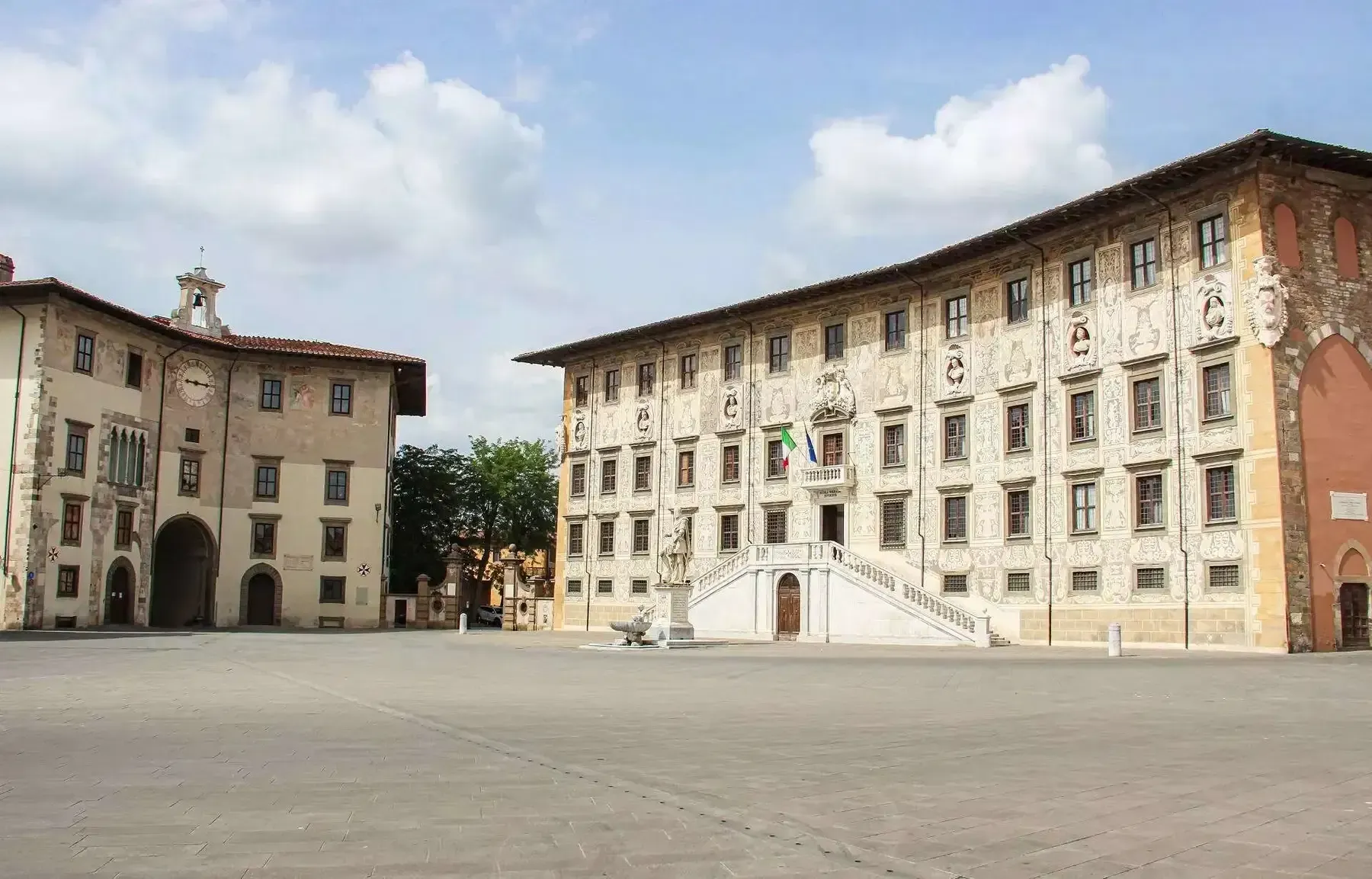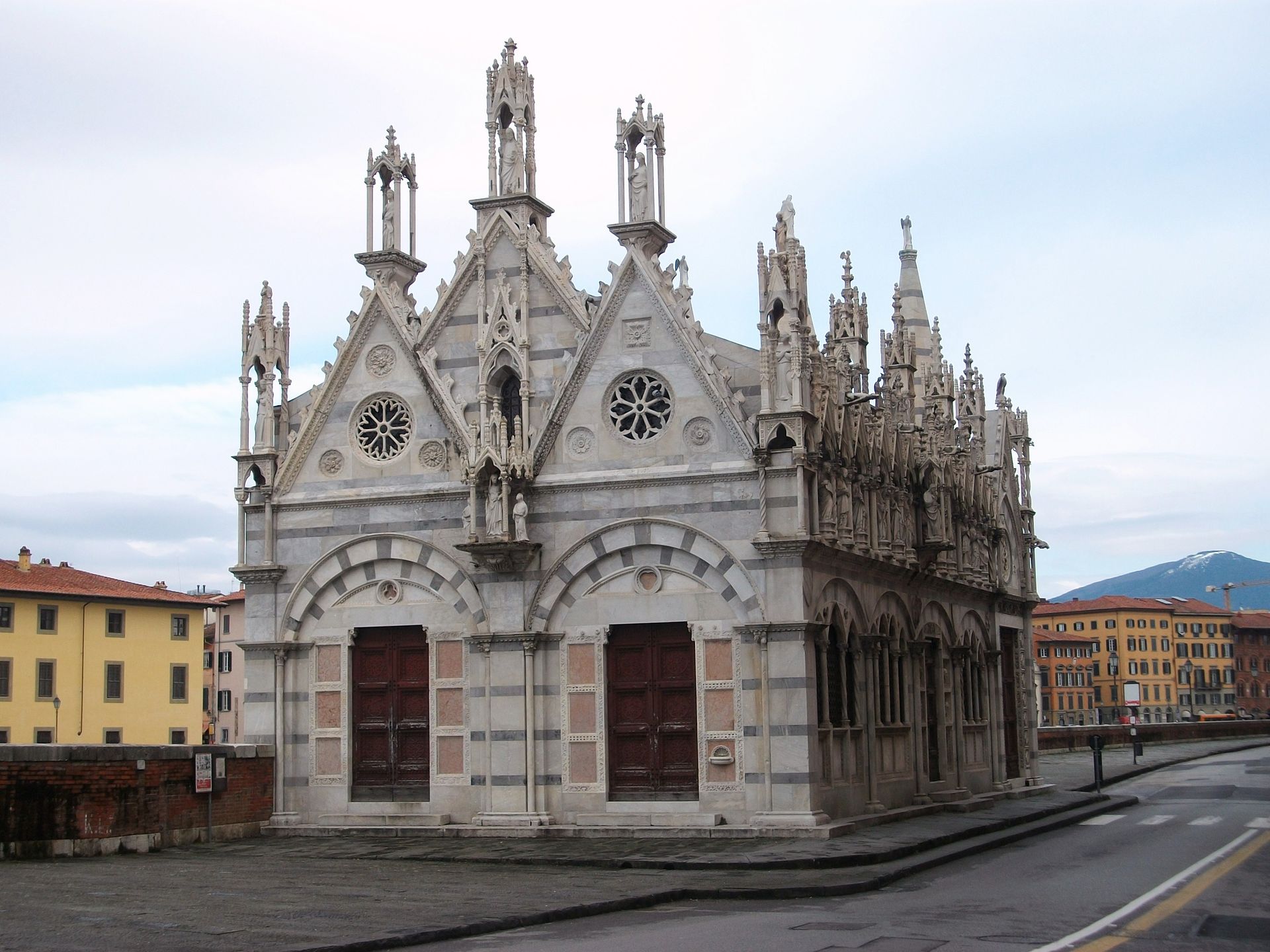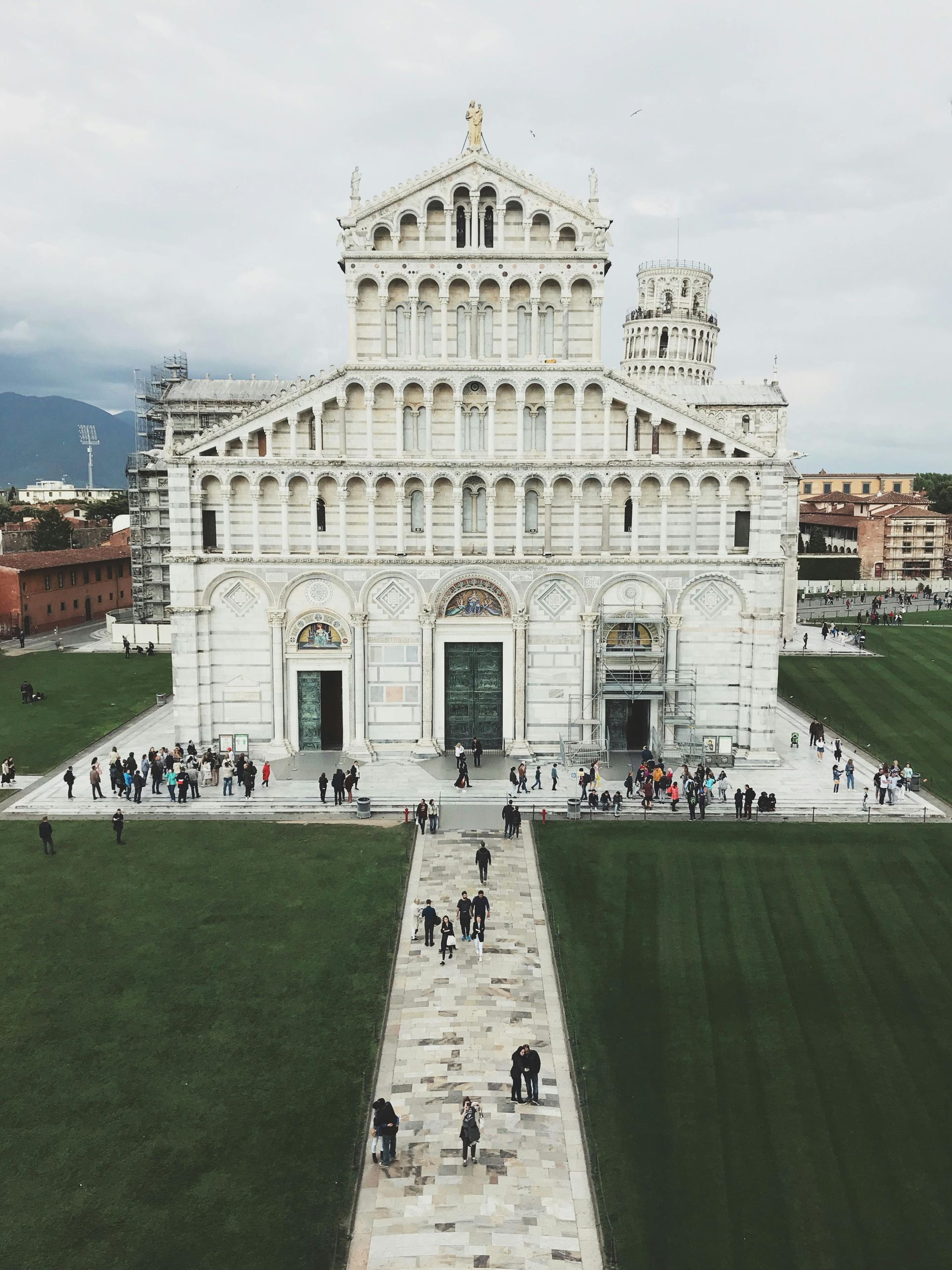THE BAPTISTERY
A Silent Testament to Medieval Craftsmanship
The Baptistery of Pisa, the largest in the world, soars to approximately 55 metres in height with a circumference of 107.24 metres. Its circular plan—echoing the Holy Sepulchre in Jerusalem—was begun in 1153 by Diotisalvi, who even signed his name on one of the interior piers. The exterior’s first tier displays blind arches punctuated by monofore and four doors aligned with the cardinal points, notably those to the west and east. Above, Nicola Pisano directed the second phase, crafting an open arcade of archivolted columns, while he and Giovanni Pisano sculpted the monumental statues, Gothic ornamentation, and the dancing figures atop the pinnacles. The uppermost level, executed by Giovanni Pisano, features twelve graceful bifore. Crowning the dome stands Turino di Sano da Siena’s bronze Saint John (1395).
The important eastern door is flanked by finely carved biblical scenes and eleven reliefs depicting the months—each tied to a seasonal activity, with September and October united in the grape harvest. At the centre lies the octagonal baptismal font (1246) by Guido Bigarelli da Como, surmounted by Italo Griselli’s Saint John the Baptist (1938). Once, rainwater entered through the oculus above, now the perch of the external John statue. The 13th-century altar rests upon an intricate inlaid marble pavement of the same era.
Inside, Nicola Pisano’s pulpit (1260)—the quintessential masterpiece of 13th-century Italian art—rises on seven columns supported by lion stilophori. Its panels narrate Christ’s life from the Annunciation to the Last Judgment, with figures moving like ancient Roman statues and the Virgin reclining as a matron from a Roman sarcophagus, evoking the Campo Santo’s funerary art. On the column shafts, Virtues and Prophets engage in silent dialogue, ascending to a heavenly Parnassus.














